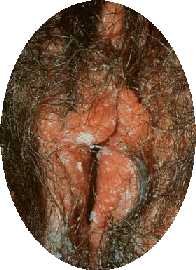Toolbox



CONTACT
|
For all comments and questions, please write to us at: [email protected] Please note that this email address is only for comments, questions, and cancellation of appointments.
For new appointment requests, please call our reception at 514 524 1001. |
CONTACT INFORMATIONS |
News • Blog
Blog
Videos
Welcome
Sexual health and LGBT population
Molluscum contagiosum
Living with HIV
Post-exposure prophylaxis (PEP)
PrEP
Toolbox
APPOINTMENTS
 |
| 1001, boul. De Maisonneuve Est, bureau 1130 Montréal Québec H2L 4P9 |
| 514 524 1001 |
| Walk-in Emergencies
Before a Visit
Cancel an appointment |
Since vaginitis often presents few signs or specific symptoms, your doctor cannot diagnosis it with a routine check-up. Vaginal infections must frequently be diagnosed by examining vaginal secretions under a microscope to detect the fungus. This procedure is called a “wet mount” test, and involves a gynecological exam in which the doctor takes a sample of vaginal secretions. The doctor will ask you to lie on the examination table, bend your knees and place your feet in stirrups. An instrument called a speculum (which resembles a duck’s beak that opens and closes) is used to open the vagina and allow the doctor to see inside. You might feel some pressure, but the test is not usually painful.
A cotton swab is used to acquire a sample of secretions from the vaginal wall. The swab is smeared on a glass slide and a drop of saline solution is added. Your doctor then examines the sample to look for evidence of a fungal infection, the presence of the parasite that causes trichomonas, or cells containing bacteria, called “clue cells”, which indicate bacterial vaginosis, also called “gardnerella”. In addition to the wet mount, a test using a pH strip (also called the “whiff test” or “sniff test”) can be done in a laboratory. All these tests can help confirm or invalidate a diagnosis. With the microscope test, your doctor can obtain results immediately.
If your doctor suspects the presence of gonorrhea or chlamydia, a second cotton swab can be used to take a cell sample from the cervix. These samples are then sent to a laboratory for incubation.
Important: Avoid using creams or vaginal douches before taking any of these tests. By doing so, you’ll make the doctor’s job of interpreting the results easier. No other precaution is required. However, these tests cannot be conducted while you’re menstruating. In this case, you’ll need to postpone your appointment.
 Vaginitis
Vaginitis
